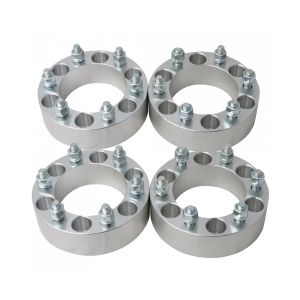Nën . 30, 2024 02:13 Back to list
wiper seal types
Understanding Wiper Seal Types An Essential Component in Fluid Control Systems
Wiper seals, often an overlooked yet vital component in hydraulic and pneumatic systems, play a crucial role in ensuring the efficiency and longevity of machinery. These seals are designed to wipe away contaminants from the surfaces of moving parts, particularly rods and pistons, preventing debris from entering the sealing area. As a result, different types of wiper seals are developed to cater to various applications and requirements, each with unique features and benefits. This article will delve into the various types of wiper seals, their construction, applications, and the considerations for selecting the appropriate type for specific needs.
Types of Wiper Seals
1. U-Cup Wiper Seals U-cup wiper seals are designed with a distinct U shape, facilitating effective wiping action. These seals are primarily used in rod applications, where they serve to remove dirt and other contaminants from the rod surface before they can enter the sealing area. U-cup seals are typically made of rubber or polyurethane and are favored for their ease of installation and cost-effectiveness. However, they may not be as effective in high-pressure environments.
2. Lip Wiper Seals Lip wiper seals feature a flexible lip that makes contact with the rod or piston to be wiped clean. This type of seal is particularly effective in high-speed applications, as the lip design allows for minimal friction, resulting in less wear over time. Lip wiper seals can be crafted from various materials, such as elastomers or thermoplastics, allowing them to withstand different working conditions, including exposure to chemicals or extreme temperatures.
3. V-Ring Seals V-ring seals are designed to provide superior sealing capability in rotary applications. The unique shape of a V-ring seal allows it to adapt to axial movement while providing excellent wiping action. These seals are often made from multi-material compositions, including rubber and fabric, which enhances their strength and durability. V-ring seals are highly effective in applications requiring resistance to dust and dirt ingress.
4. Composite Wiper Seals Composite wiper seals combine materials to leverage the benefits of each. Typically, these seals feature a hard outer layer coupled with a softer inner layer. The hard outer layer provides outstanding wear resistance, while the soft inner layer maintains excellent sealing capability. Composite wiper seals are ideal for use in harsh environments where extreme temperatures or abrasive contaminants are present.
5. Metal Wiper Seals Unlike traditional rubber or plastic seals, metal wiper seals are constructed from durable metals such as stainless steel or aluminum. These seals are designed for heavy-duty applications, offering exceptional resistance to wear, heat, and chemical degradation. Metal wiper seals are particularly useful in environments where conventional seals may fail, such as in mining or heavy equipment operations.
Applications of Wiper Seals
wiper seal types

Wiper seals are commonly used in various industries, including automotive, aerospace, manufacturing, and agriculture. In hydraulic systems, they prevent contamination that could lead to failure, ensuring smoother operation and prolonged equipment life. In pneumatic applications, wiper seals are vital for maintaining air pressure and preventing outside contaminants from affecting performance. Moreover, these seals are also integral in ensuring the reliability of equipment exposed to extensive wear and tear, such as construction machinery.
Considerations for Selection
Choosing the right wiper seal involves several considerations
- Material Compatibility Selecting a seal material that withstands the specific environmental conditions, such as exposure to chemicals or extreme temperatures, is critical for performance and durability. - Application Type Depending on whether the application is hydraulic, pneumatic, or rotary, the right type of wiper seal must be selected to meet the demands of the operation.
- Size and Fit Proper dimensions are crucial for effective sealing. Any deviation can lead to improper wiping action and premature seal failure.
- Pressure and Speed Requirements Different wiper seals are rated for various pressure and speed conditions. Ensure that the selected seal meets the operational specifications to avoid failure.
Conclusion
Understanding the different types of wiper seals and their applications is vital for anyone involved in the maintenance and management of fluid control systems. By selecting the appropriate seal for specific conditions, one can significantly enhance the reliability and efficiency of machinery, leading to reduced downtime and increased productivity. Considerations such as material compatibility, application type, and operational demands play an essential role in ensuring optimal performance. As technology advances, wiper seals will continue to evolve, providing even better solutions for sealing and protection in diverse industrial applications.
-
TCN Oil Seal Metal Ring Reinforcement for Heavy Machinery
NewsJul.25,2025
-
Rotary Lip Seal Spring-Loaded Design for High-Speed Applications
NewsJul.25,2025
-
Hydraulic Cylinder Seals Polyurethane Material for High-Impact Jobs
NewsJul.25,2025
-
High Pressure Oil Seal Polyurethane Coating Wear Resistance
NewsJul.25,2025
-
Dust Proof Seal Double Lip Design for Construction Equipment
NewsJul.25,2025
-
Hub Seal Polyurethane Wear Resistance in Agricultural Vehicles
NewsJul.25,2025
-
The Trans-formative Journey of Wheel Hub Oil Seals
NewsJun.06,2025
Products categories
















